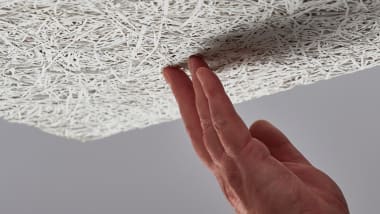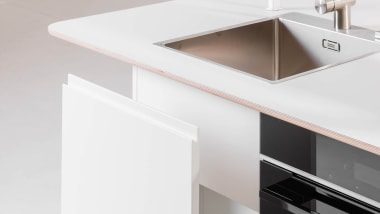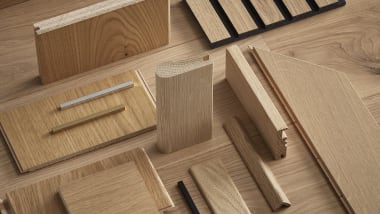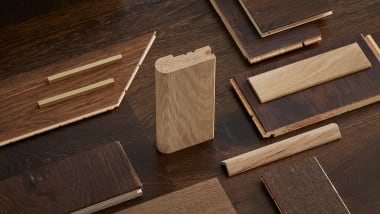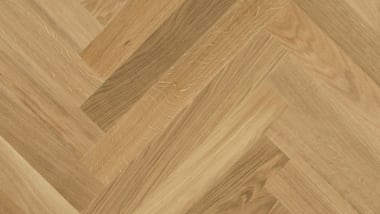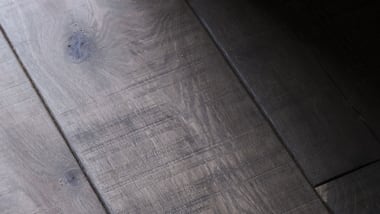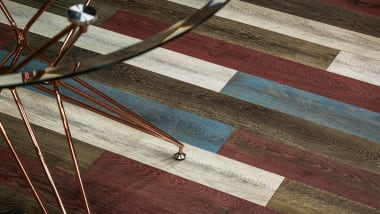An engineered wood floor is a superb alternative to solid wood, providing a hard-wearing finish without compromising on aesthetics - but it's not necessarily a cheaper alternative. There are several benefits to using engineered wood, such as a greater choice of finishes, and long-lasting durability. If your budget is really tight, consider the excellent real wood veneer products within PurePlank, or Havwoods' twenty-first century alternative to laminate flooring may well offer the right alternative.

Engineered Wood Flooring
Product Featured: HW2158 Blaine
Filters
Products (39)

HW6418
Maple
Boutique
Herringbone | Select
280mm x 70mm x 12.7mm

HW2912
Bandol 06
Boutique
Plank | Prime
1203mm x 190mm x 9mm

HW2910
Fendi 06
Boutique
Plank | Prime
1203mm x 190mm x 9mm

HW6590
Walnut Parisienne
Venture Plank
Versailles | Select
800mm x 800mm x 18mm

HW6574
Walnut Parisienne
Venture Plank
Mansion Weave | Select
18mm

HW6572
Walnut Parisienne
Venture Plank
Flower | Select
18mm

HW7804
Eston
Boutique
Plank | Character
Random x 185mm x 20mm

HW2098
Roscoff
Boutique
Plank | Rustic
1800mm x 180mm x 14mm/2.5mm

HW6850
Ryde
Boutique
Herringbone | Rustic
420mm x 140mm x 14mm

HW6840
Mascot
Boutique
Herringbone | Rustic
420mm x 140mm x 14mm

HW990
European Oak
Boutique
Plank | Character
1950-2400mm x 260mm x 20mm


HW961
Amendo
Boutique
Plank | Rustic
1950-2400mm x 180mm x 20mm

HW16918
Lusso
Boutique
Plank | Prime
800-1400mm x 120mm x 10mm

HW8358
Winston
Boutique
Plank | Rustic
400-2200mm x 180mm x 15mm
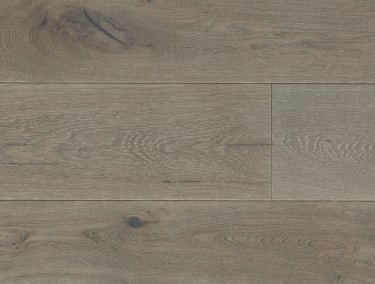
HW7800
Unity
Boutique
Plank | Character
2400mm x 185mm x 20mm

HW3135
Walnut
Boutique
Herringbone | Select
600mm x 90mm x 15mm
What is engineered wood flooring?
Wood is hygroscopic. This means that it absorbs moisture. So when the surrounding humidity changes, either due to changes in the climate or through the use of heating or air conditioning, wood can swell or shrink. This can result in the planks cupping or warping, or gaps opening up between them.
When we say wood is 'engineered' we simply mean that it is made up of multiple layers. The top layer, known as the wear layer or lamella, is usually a hardwood and most often it is oak. The base layers are usually softwood or a multi-layered plywood, although occasionally they may even be made with more layers of hardwood. All the layers are bonded together so that the grain of each one runs perpendicularly to that of the layer on either side, making it virtually impossible for the wood to swell or shrink.
The advantages of engineered wood
Engineered timber offers you a lot more choice.
Because it is so stable, engineered wood planks and blocks can usually be fitted over underfloor heating. They are also now available in much bigger sizes, so those really impressive wide and long planks you see are a direct result of engineering wood.
Most engineered wood products are pre-finished, which means that you can see exactly what your floor will look like before it is fitted. And since there are now so many wonderful finishes available it ensures you have far more options without having to resort to the use of tropical hardwoods. Furthermore, in addition to all the usual installation methods, engineered wood planks with a click fit system offer a particularly easy option.
And last, but by no means least, engineered wood is particularly tree-friendly because it uses less of the slow-growth hardwoods. Using more wood is, in general, good for our planet because it encourages the harvesting and replanting of our forests, but fast-growing softwoods provide a quicker turnover.
alternatives to an engineered wood floor
Engineered wood flooring is a superb alternative to a solid wood floor, but it's not necessarily a cheaper alternative. If you want the look and feel of real wood in a quality flooring but are on a tight budget a veneer could well be the perfect answer. A veneer uses a very thin layer of real wood, usually bonded to a core of some type of composite wood product like fibreboard.



